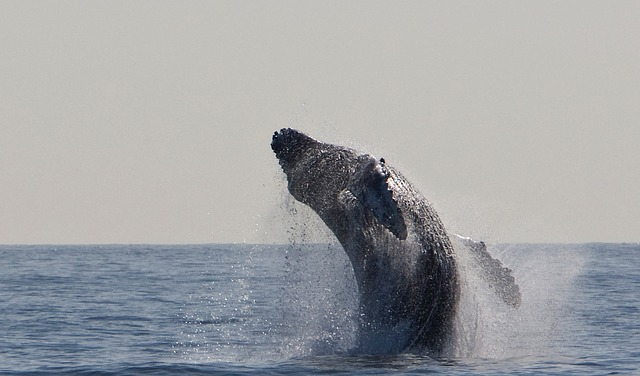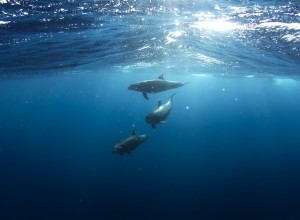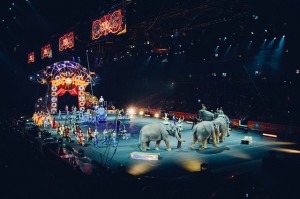
Circuses. Zoos. Aquariums. These are the wholesome, family activities that excite and amuse kids and even some adults. It makes sense, how often can someone feel 100% safe and secure while watching a lion? While these activities are entertainment staples of cultures all around the world, there are some ethical questions around the idea of animal captivity.
I used to love going to circuses and zoos, and used to beg my parents to take me to aquariums. Even fairly recently, I would delight in taking my little brother to the zoo on a hot, summer’s day. After watching Blackfish however, a documentary about the effects of captivity on orcas at SeaWorld, I’ve begun to reconsider my stance on these once romanticized activities.
Zoos and Aquariums
Zoos and aquariums certainly do good things for our society and even for certain species. For instance, there are several species of animals that would be extinct if it weren’t for their zoo captivity and the special programs put in place by the American Association of Zoos and Aquariums. These programs take endangered animals and try to repopulate them in a genetically diverse way that nurses them back into sustainability. There are also instances in which these animals can be reintroduced into the wild.
Institutions like zoos and aquariums are also sources of education about the greater world around us. It can be argued that without these types of institutions that allow the public close access to animals from all around the globe, we would not necessarily care about the destruction of their habitats or their extinction. There would be no personal connection to them.
Even with these benefits in mind, animals shouldn’t necessarily be in captivity if they are healthy, their species is thriving in the wild, and/or they are animals that typically travel long distances in the wild. One reason is because the captive animals don’t have the space to roam as freely as they do in the wild and don’t have the social lives that they would naturally. Think about it: What if you only had the same enclosed space to circle?
As journalist Mark Derr reported in a 2003 edition of the New York Times, “Polar bears, lions, tigers, cheetahs and other wide-ranging carnivores do so poorly in captivity that zoos should either drastically improve their conditions or stop keeping them altogether…..The typical zoo enclosure for a polar bear is one-millionth the size of its home range in the wild, which can reach 31,000 square miles.”

There are animals that do thrive in captivity, as Derr goes on to point out. These animals are the types that do not need to travel that far. If zoos and aquariums were only about conservation and did not incorporate species that needed more stimulus and more space to roam, they would perhaps be more ethical. Zoos and aquariums as a whole are not necessarily bad or evil. Some of them just need some enhancing and restructuring. The welfare of the animals should be considered holistically before putting them in a habitat that could potentially be too small and too boring for them to be fully happy and healthy. Similarly, aquatic animals also need much more space than even the largest aquariums can offer.
Whales, dolphins, and other cetaceans are actually incredibly smart and rival human intelligence. Their emotional capacity is “particularly expanded” according to Discovery News, and dolphins have even been shown to give each other individual names. This is a trait that has only been seen in humans until now. Because of their intelligence and the sophistication of their social structures, cetaceans have actually been granted the status of “non-human persons”. This means that even though they aren’t actually people, they should be regarded with the same respect. This is why they should also be free to roam. Aquariums that keep whales and dolphins are essentially enslaving them.

They have been found to be incredibly smart and emotional, often traveling hundreds of miles in the ocean. Captivity is not the way they should be forced to spend their lives. This argument is frequently likened to humans spending their lives in a bathtub. When you are an animal that needs to be free and travel 100 miles a day, a tank just doesn’t cut it. Because they are so sentient, they are definitely aware that they’re missing out on something better.
Lori Marino, a biopsychologist from Emory University told the LA Times, “[I]f we are talking about whether killer whales have the … cognitive capacity to intentionally strike out at someone, or to be angry, or to really know what they are doing, I would have to say the answer is yes.”
This is what leads to accidents and trainer deaths. Captivity is not just harmful to the animals, but it is also harmful to people. The death of Dawn Brancheau at the hand — (or flipper?) — of Tilikum, a killer whale at SeaWorld, is a prime example of how captivity frustrates animals like whales and dolphins. This frustration causes them to lash out and harm trainers and other people nearby. Because of the dangers that aquariums pose to animals and people, all aquariums should phase out the captivity of cetaceans.
It should be noted SeaWorld has recently announced it will end its orca breeding program and phase out orca shows in favor of more “natural” encounters for visitors.
Circuses
Circuses provide lively entertainment for the whole family. Whether it’s watching tightrope walkers or eating cotton candy, there is a certain draw to the circus. Probably one of the biggest draws is the animals. Some circuses have animals such as lions and tigers and elephants promenading about the ring and performing odd tricks. But we don’t usually put that much thought into what happens to the animals after they leave the ring. Circuses travel long distances and these animals have to be transported, somehow. And how do they learn those tricks, anyway? These are the questions that lead you down the dark rabbit hole of discovery.

Pat Derby, an animal trainer and founder of Performing Animal Welfare Society, said in a 2004 edition of National Geographic that the animals in circuses travel up to 50 weeks a year. During this travel time, animals such as elephants are chained in box cars.
When the elephants are taught tricks, the trainers use what is called a bullhook or an ankus. The bullhook is a sharp tool that trainers use to goad the elephants into doing certain actions. Sometimes however the trainers use too much force, and the tool that is widely described as being safe and harmless to the elephants suddenly becomes cruel and abusive. It is akin to the saying, “Guns don’t kill people. People kill people.” The bullhook itself is a harmless tool, but when it is used improperly by impatient and unthinking animal trainers, it becomes unacceptable. This was the case with Anne, an elephant in the Bobby Roberts Circus in England. Secret video footage showed the elephant’s groomer, Nicolai Nitu, severely mistreating the elephant.
Circus animals tend to die premature deaths, and the tricks they perform are unnatural. Disease is also a problem for circus animals. A nine year study on circuses in the Netherlands showed that 71 percent of the animals had medical problems, 68 percent of animals were malnourished, lions spent 98 percent of their time indoors, and the wildcats had no outdoor enclosures or natural habitats.
There are clear problems that circus animals face. It is because of this that many states and countries have begun to ban circus animals. This is a great first step. The welfare of the animals should definitely be put before profit and entertainment. This is true of zoos, aquariums, and certainly circuses where there are no educational purposes.
Captivity As a Whole
Zoos keep long-distance animals from roaming where they please, aquariums enclose incredibly bright and social species such as dolphins and whales while circuses use harmful and improper methods to train and transport their animals. Fortunately thanks to documentaries like Blackfish people are becoming more aware of the needs of animals.
I know it is hard to come to terms with the fact that these institutions aren’t necessarily harmless forms of entertainment but you have to separate your desire for entertainment from the welfare of the animals. You visit the zoo or circus to pass the time and have fun but you get to leave when you are done. The animals don’t.
Great information, Haley Davis. Congratulations on being published on the web. I see great things in your future.
10/10 good article. Strongly approve.